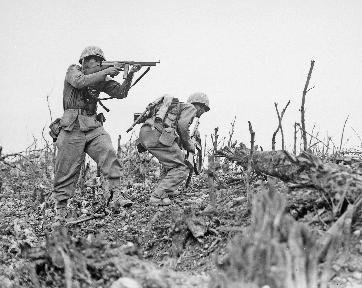Quiz Answer Key and Fun Facts
1. On November 19th 1942, Red Army launched Operation Uranus, a Stalingrad counter-offensive aimed at encircling and destroying Axis forces in Southern Russia. The offensive was a major success and it trapped over 300,000 soldiers of the German 6th Army. Which of these was NOT a reason that lead to Soviet success in this operation?
2. After decisively destroying German forces around Stalingrad in early February 1943, Soviets also went on to simultaneously destroy Germany's Axis allies in Southern Russia, inflicting an unparalleled defeat on Axis forces which meant that Nazi Germany would lose the war. How many Axis armies did the Soviets managed to destroy and what were the combined Axis casualties?
3. After the decisive Soviet victory at Stalingrad, one famous Allied person wrote the following: "I want to express to the Red Army on its twenty-fifth anniversary our profound admiration for its magnificent achievements unsurpassed in all history. The Red Army and the Russian people have surely started the Hitler forces on the road to ultimate defeat and have earned the lasting admiration of our people." Who wrote it?
4. In March 1943, after months of non-stop advance in Southern Russia, Soviet offensives were stopped by a series of German counterstrokes around Donets Basin and Kharkov, led by Erich Von Manstein. Which of one of these four was NOT a reason which brought to a halt Red Army's winter campaign of 1942-1943?
5. As a last ditch effort to regain strategic initiative, on July 5th 1943 Germans launched Operation Citadel, a major offensive at the Kursk bulge which turned into the greatest tank battle ever. As the plan called for double envelopment to destroy Soviet armies in the salient, Germans would strike from North and South. The Soviets would prepare three main defensive belts in each sector. In which sector of the offensive did the Panzer forces managed to achieve deepest penetration?
6. After weeks of fighting in the Kursk salient, Soviets managed to fully stop German advances in North and South by late July. In early August, Soviets launched their own counter-offensives which forced the Germans to fully retreat from both sectors and which meant that Operation Citadel failed while the Soviets irreversibly took over the strategic initiative. Which one of these was NOT a reason that lead to the failure of German offensive and subsequent Soviet advances?
7. After Kursk, one key Nazi German general said the following: "As a result of the failure of the Citadel offensive, we suffered a decisive defeat. Armored forces, replenished with such great difficulty, because of the large losses in people and equipment, for a long time were put out of action. Needless to say, the Russians hastened to use their success. And there were no more quiet days on the Eastern Front. The initiative was completely transferred to the enemy." Who said it?
8. After the Wehrmacht defeat at Kursk, the Germans began a full-scale retreat from the left-bank Ukraine and Donets basin to the mighty Dnieper river where they hoped to contain the Soviets for a long time. What was characteristic during August-September 1943 German retreat and Soviet advance?
9. The Battle for the Dnieper, fought from September to December 1943, was the single largest operation of WW2 as well as being costly for both sides. The battle proved to be another major defeat of the Wehrmacht. Which one of these aspects was NOT a direct outcome of this major battle?
10. "The battle of Kursk... the forcing of the Dnieper... and the liberation of Kiev, left Hitlerite Germany facing catastrophe." Which famous Soviet military leader said this?
Source: Author
Uspech3da
This quiz was reviewed by FunTrivia editor
bloomsby before going online.
Any errors found in FunTrivia content are routinely corrected through our feedback system.
